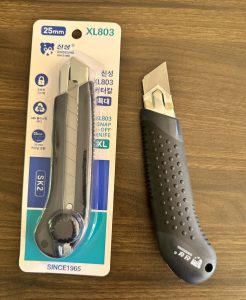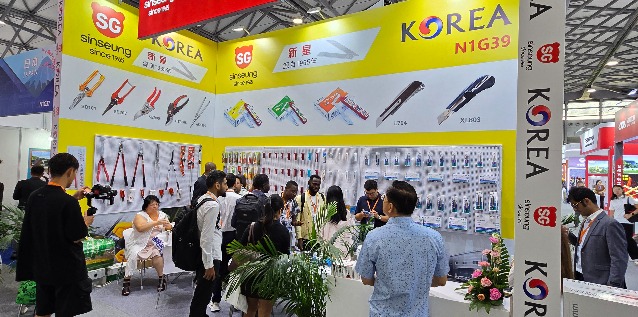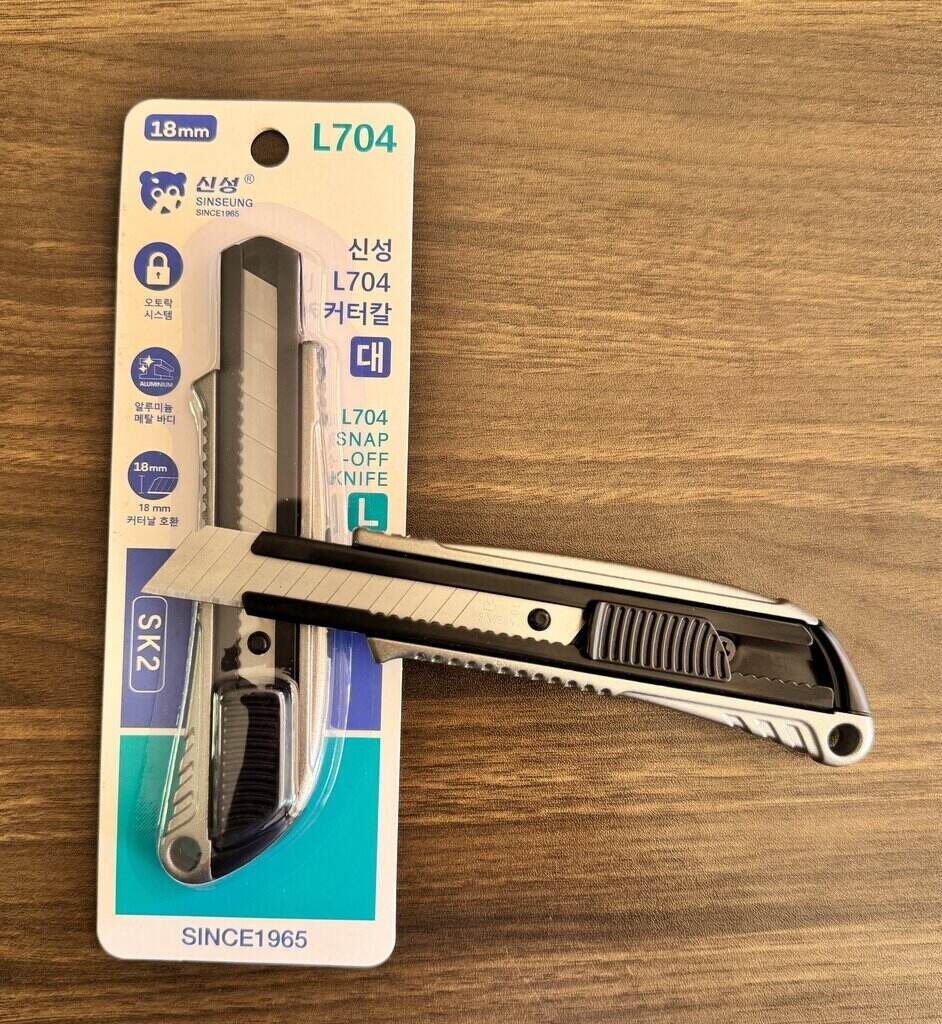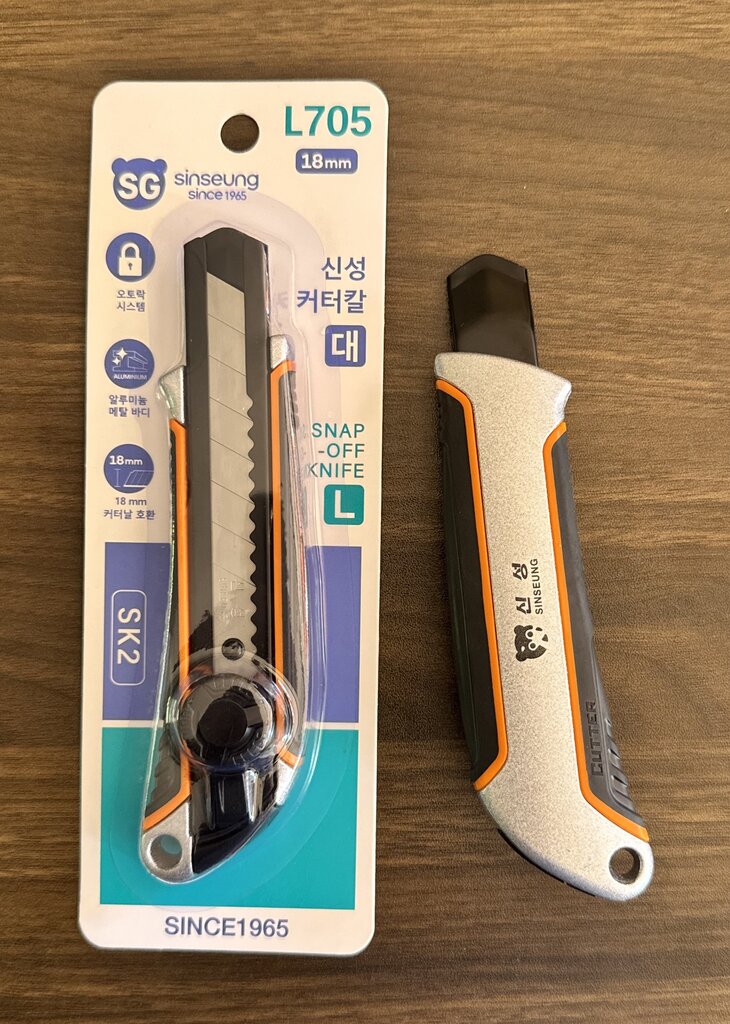Which Key Features Should You Look for in an Industrial-Grade Retractable Box Cutter
2025-11-20Choosing the right retractable box cutter is about more than slicing through tape or cardboard.
In industrial settings—from lighting fixture packaging to cosmetic device assembly—every detail of your cutting tool affects both product safety and worker efficiency.
Below are the essential features you should evaluate before adding a box cutter to your procurement list.
1. Handle Material and Build Quality
The handle is where control begins. In daily factory or warehouse operations, a weak handle can cause slippage, injuries, or fatigue.
Look for cutters with metal or alloy bodies that resist wear and provide a firm, balanced grip. Over time, plastic handles may crack under pressure, especially in high-frequency use.
For workers on assembly lines or packaging teams, ergonomic contours and anti-slip surfaces reduce strain and maintain accuracy during repetitive cuts.
A good grip isn’t a luxury—it’s a productivity factor.
2. Slide or Lever Mechanism & Retractability
A reliable retractable mechanism defines a professional-grade cutter. The smoother the slider or lever, the safer and faster the workflow.
When sourcing, confirm these aspects:
- The blade locks firmly in place during use.
- It retracts smoothly and automatically after the cut.
- The mechanism prevents accidental extension while stored.
In a fast-paced production area, this consistency saves seconds per task and helps avoid minor but costly accidents.
3. Blade Type, Compatibility, and Replacement Ease
The blade determines precision and long-term cost. In an industrial environment, workers cut through cardboard, plastic film, foam, and strapping dozens of times per hour.
For clean, repeatable results, use cutters that support high-quality, easy-replaceable blades.
Sinseung’s 9 mm SK2 high-carbon steel blades are engineered for both home and industrial workloads, balancing hardness and edge retention.
For comparison, the S505 Cutter uses the same blade series in a compact, ABS-reinforced shell.
When evaluating blades, check:
- Width and thickness (commonly 9 mm or 18 mm).
- Material: SK2 steel, induction-hardened, or bi-metal types.
- Snap-off vs. fixed design.
- Quick-change systems that don’t require extra tools.
- Spare blade storage built inside the handle.
The ability to switch blades quickly keeps your line moving without unnecessary downtime.
4. Safety Features
Safety is non-negotiable in industrial workplaces. A good box cutter retractable system protects not only operators but also nearby components.
Modern designs include:
- Auto-retracting blades that slide back after each cut.
- Blade-lock switches to avoid unintentional exposure.
- Built-in storage to prevent loose, unsafe blades around workstations.
When used around delicate products—like LED modules, glass panels, or printed packaging—an automatic retraction mechanism helps reduce costly damage and accidents.
Ergonomic triggers also encourage correct hand posture, lowering fatigue over long shifts.
5. Depth Control, Material Adaptability & Industrial Fit
Not every material needs the same cut depth. A rigid foam board, for instance, requires a deeper stroke than a thin film wrap.
As noted on Sinseung’s product news page, industrial users should consider blades offering multiple extension levels, typically 15 to 25 mm for dense foam.
Cutter versatility allows one tool to handle various packaging tasks—from cardboard cartons to plastic sheets and cable insulation—without constant tool changes.
Before finalizing a purchase, confirm:
- Adjustable cutting depth or multiple lock positions.
- Compatibility with thicker materials.
- Reinforced tip design for long service life.
A well-specified cutter adapts to your workflow rather than limiting it.
6. Practical Sourcing Example
Imagine a packaging line preparing lighting fixtures for export. Workers must slice foam inserts, wrap film, and tape cartons continuously.
When drafting your sourcing specification, include key requirements such as:
- Quick-change blade system.
- Compatible with 9 mm blade family.
- Metal or reinforced ABS body.
- Built-in blade storage and safety lock.
This checklist helps vendors deliver consistent, reliable cutting tools suited to industrial environments.
Conclusion
When you choose a retractable box cutter for industrial use, you’re selecting a precision tool that influences both productivity and safety.
Focus on five essentials—build quality, retractability, blade type, safety systems, and adaptability—and you’ll secure long-term value for your operation.
Whether you’re sourcing tools for a lighting plant, packaging lab, or electronics workshop, the right cutter turns routine tasks into efficient, safe workflows.
FAQ
Q1: What’s the difference between a retractable box cutter and a regular one?
A retractable box cutter lets the blade slide safely inside the handle after each use, preventing injuries. Regular cutters often have fixed blades, which stay exposed even when not in use.
Q2: Why does blade quality matter in an industrial setting?
High-carbon or induction-hardened blades stay sharper longer and require fewer replacements. Sinseung’s SK2 steel blades, for example, maintain edge strength during repetitive cutting shifts.
Q3: How often should the blade be changed?
Replace it as soon as the cuts feel rough or require extra pressure. In high-volume packaging lines, frequent blade swaps actually reduce costs by preventing material waste and worker strain.
Q4: Which materials can an industrial box cutter handle?
A professional cutter should slice through cardboard, plastic film, foam, and light metals.
Sinseung lists applications including paper, plastic sheet, PPF car wrap, leather, and wall-covering materials on their utility knife page.
Q5: Are safety certifications worth considering?
Absolutely. Look for cutters with tested lock mechanisms, anti-slip handles, and ergonomic approvals. Compliance with OSHA or local safety standards signals the product was designed for industrial duty.








